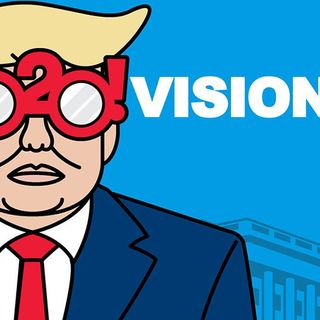There has never been a Trump honeymoon. Nor any meaningful period of national unity under the 45th president’s leadership. He is the most unpopular president in modern American history, with poll approval ratings consistently in the low- to mid-40s. He has driven wedges between the United States and its two great neighbours, Canada and Mexico, and between the United States and its historic allies in Europe.
And yet, Trump must be considered favoured to win re-election in 2020.
In historic terms, it is very difficult to deny a sitting president a second term. If the modern presidency can be dated from FDR, it is only Jimmy Carter, in 1980, whose party failed to hold the White House for more than one term. And that took a recession, American hostages being held in Iran for more than 400 days together with a pathetic, failed rescue attempt, and an Arab oil embargo that forced Americans to line up for months for rationed, expensive gasoline.
2020Vision: Alliance politics in the age of "America first"

Trump has successfully trashed the institutions of accountability – especially Congress and the mainstream press – so that he can keep his balance and control of his narrative. In Watergate, it was a Democratic House and Senate that prosecuted Nixon with investigative and impeachment hearings. There were only three national television networks. No internet. No Fox News. No Twitter. The establishment media rendered unimpeachable verdicts.
Trump has also successfully trashed his political opponents. His mud sticks better, as Hillary Clinton and the mainstream media (“the enemies of the people”) have realised. And Trump already has cunning aim on his most potent Democratic threats.
At the same time, the Republican Party is completely supine before him. Trump engaged in a successful hostile takeover of the GOP in 2016 – and he has not looked back. There is no one slightly credible Republican primary challenger to Trump’s re-nomination. Men like John Kasich, the former Republican governor of Ohio, see no point in a challenge. The Republican congressional leadership has collapsed into a spineless, subservient heap at Trump’s feet, even as Trump alters the party’s DNA on balanced budgets, tax reform, American exceptionalism, free trade, immigration, the promotion of democracy and opposition to dictatorships.
Those with doubts in the Republican ranks in Congress are mute – in their voices and in their votes on legislation. Only retired Republican leaders – the Bush family and the late Senator John McCain – have been vocal in their unease. Only one Republican member of the House has broken irrevocably with Trump by calling for his impeachment.
With the Republicans united, the Democrats, with more than 20 candidates, are inevitably divided. The danger, of course, is that the Democratic nominee will be farther to the left than the country is willing to go. Australians know from recent experience the chances of success for an opposition party with an agenda built on economic equity, social services and climate change.
Several respected political models show Trump winning next year – and their secret is the economy, which is simply the best since the last years of the Clinton presidency and since the late ‘60s. Peace and prosperity are hard to beat. And the scandals have not landed. While House Democrats may ultimately see it as their inescapable responsibility to protect their institution under the Constitution, there is no critical mass of support in the country for impeachment, and there is no prospect for conviction in the Senate.
Trump is fully competitive. It will take everything the Democrats have to beat him.
So, what will it take to take out Trump? A truly effective Democrat who can re-create the wave that removed Republicans from power in the House last year, who can paint a future of American restoration, unity and hope. It will take a Democratic ticket that inspires women and voters of colour to turn up on polling day.
A shock decline in the economy as a result of the trade wars and the expiration of the US$2 trillion sugar hit of tax cuts and deficit spending may also assist the Democrats. An unpopular president and a fantastic economy are one thing. A country in recession and an unpopular president are another.
Democrats may also take heart from this moment in history: In June 1991, President George H.W. Bush, having won the Cold War and the first Iraq War, had an approval rating of nearly 70 per cent. Scared of Bush’s formidable political position, a very small field of relative unknowns decided to take him on. Doomed to fail. By the time of the election 18 months later, in the midst of the worst recession since the Depression, Bush’s approval had fallen to below 40 per cent, and a governor from Arkansas, Bill Clinton, won with 370 electoral votes, and 43 per cent of the popular vote in a three-way field (remember Ross Perot?).
So yes, of course Trump can be beaten if the voters behind those disapproval ratings are mobilised, determined, united – and turn out. But looking at the field today as Trump announces his re-election campaign, he has his enemies manageable if not under control, his party completely subservient, his fundraising and digital campaigns fully deployed, his base unwavering.
Trump is fully competitive. It will take everything the Democrats have to beat him.






